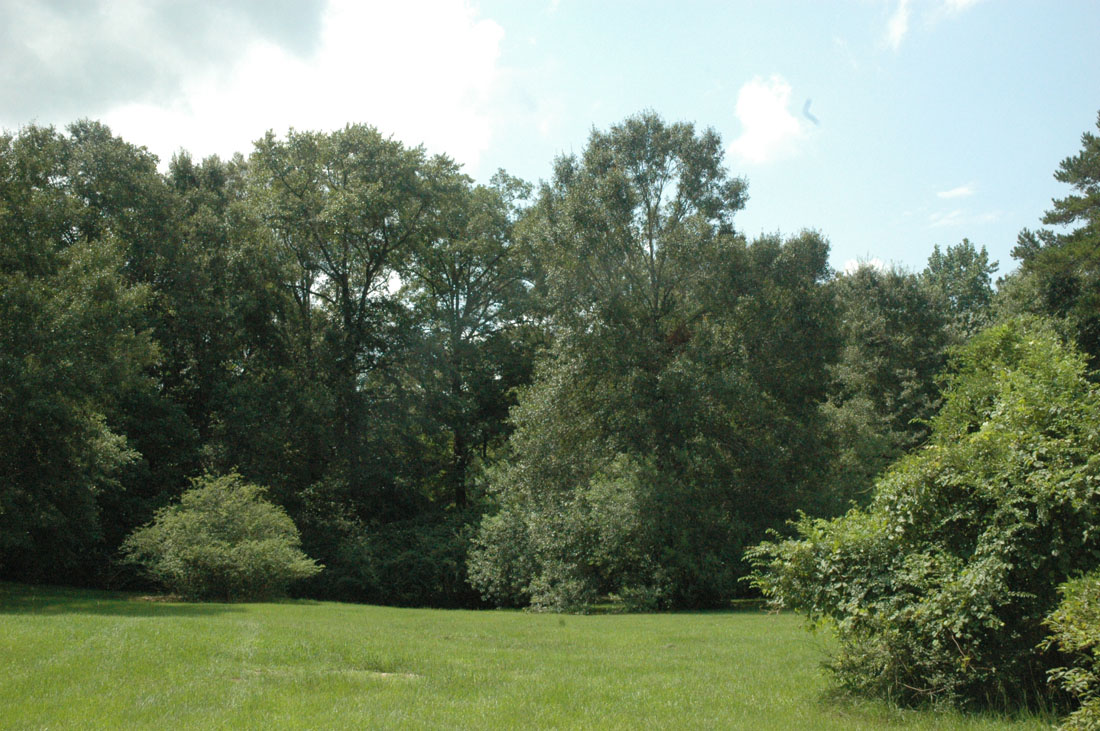Ants in Percy Quin State Park, Pike County, Mississippi [MS State Park Ants]
Joe A. MacGown, uploaded on 13 October 2011
Percy Quin State Park is located six miles south of McComb, in Pike County, Mississippi. This large 1700 acre park features a 700 acre lake and a championship golf course. The rolling terrain is mostly wooded with mixed loblolly pine/hardwood forests, which include upland forests pines and oaks to low wet boggy areas and intermediate habitats with beeches, magnolias and fern understories.
I arrived at the park at about 9 AM, and since I had limited time, I looked for a nature trail to collect along. As passed through the apparently very popular golf course area, I circled around the headquarters, then a swimming pool, and made my way to the nature trail, which was located near some unused tennis courts. As is usually the case at this time of year, I was the only person on the trail! Too hot for mortals I guess. I began my collections by looking around the open areas near the trail head (31°40'46"N 90°30'46"W) finding some dark rover ants, Brachymyrmex patagonicus, a few ponerine ants, and an abundance of imported red fire ants, Solenopsis invicta. I then collected along the trail that began in an upland pine/hardwood forest. In this area I collected a gallon of leaf litter from the base of a large oak and another gallon bag from the base of a large loblolly pine.
As I continued my way down the trail, I found myself in a beautiful wetland-boggy area with open sloughs. An elaborate elevated boardwalk system allowed for foot travel through the area. The slightly higher areas were dominated by beech, magnolia, oaks, and some pines. It was in this area that I collected another bag of soil and leaf litter (31°11'56"N 90°30'56"W). Unfortunately, I did not have my camera with me at the time, so I did not get photos of the area. Colonies of Lasius alienus, a common species that is often associated with bottomland forests, and Nylanderia faisonensis, were both found in the area. Colonies of small yellow thief ants were abundant nesting in the bark of loblolly trees, and based on the large-eyed yellow female that I found, this species was likely Solenopsis carolinensis. A colony of Aphaenogaster lamellidens and an alate Proceratium pergandei queen were also found in the pine bark.
After being in the woods for a couple of hours, the sky darkened, with an impending storm coming in. So, I made my way back to the truck. I had time to stop by a picnic area by the lake and near a playground (31°11'34"N 90°30'51"W) to change into some dry clothes and eat some lunch before I began my journey back to Starkville. I was completely soaked from sweat! The humidity level here in Mississippi at this time of year is incredible! I literally have to drink 1.5 to 2 gallons of liquid a day when in the field to avoid dehydration. While here I did a quick shake down of some lake side vegetation and snagged a Pseudomyrmex ejectus. I just missed getting rained on, but had to drive through rain much of the way home.

The lake and lake side vegetation
Overall, during the couple of hours I was at the park, I collected a total of 25 species of ants including three exotic species: Brachymyrmex patagonicus, Pheidole moerens, and Solenopsis invicta.
List of ant species collected (arranged alphabetically by genus)
Aphaenogaster fulva Roger
Aphaenogaster lamellidens Mayr
Brachymyrmex depilis Emery
*Brachymyrmex patagonicus Mayr
Camponotus castaneus (Latreille)
Camponotus chromaiodes Bolton
Crematogaster ashmeadi Mayr
Formica pallidefulva Latreille
Lasius americanus Emery
Myrmecina americana Emery
Nylanderia faisonensis (Forel)
Pheidole dentata Mayr
Pheidole metallescens Emery
*Pheidole navigans Forel
Ponera pennsylvanica Buckley
Proceratium pergandei (Emery)
Pseudomyrmex ejectus (F. Smith)
Solenopsis carolinensis Forel
*Solenopsis invicta Buren
Strumigenys dietrichi Smith
Strumigenys louisianae Roger
Strumigenys rostrata Emery
Tapinoma sessile (Say)
Temnothorax pergandei (Emery)
Trachymyrmex septentrionalis (McCook)




